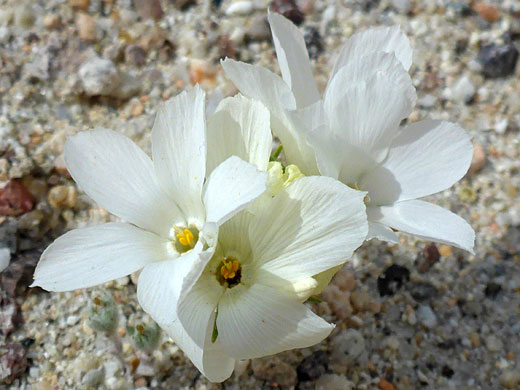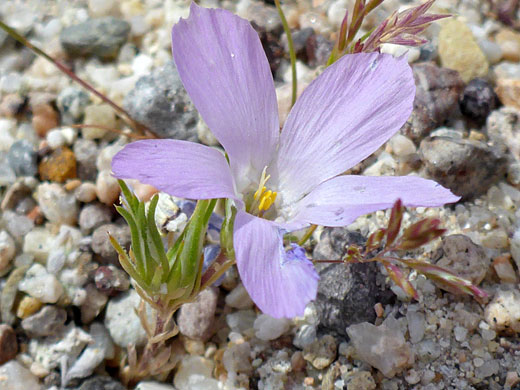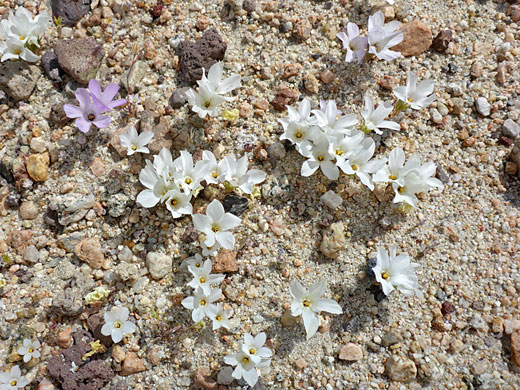Common name:
Sandblossoms
Family:
Scientific name:
Linanthus parryae
Main flower color:
Range:
South California
Height:
Up to 4 inches
Habitat:
Open, sandy areas in deserts, from 2,000 to 6,000 feet
Leaves:
Narrow, linear, hairy, up to 0.6 inches long
Season:
March to May
Flowers of linanthus parryae have two distinct colors; white, or bluish-purple, often differing for adjacent plants. White seems to be slightly more common. The corolla is funnel-shaped, about 0.4 inches long, with a short tube and relatively large lobes. The lobes are somewhat uneven along the upper edge, and they have one or two purple spots at the base. At the center are five stamens topped by yellow anthers, not exserted, and a slightly longer pistil. Beneath the corolla is the five-lobed calyx, about two thirds as long. The calyx lobes are green and narrow, and mostly unfused.
Stems have a covering of glandular hairs, and they tend to run along the ground. Leaves are crowded, often hiding the stem, though they in turn are obscured by the larger flowers. Flowers are subtended by linear bracts, similar in appearance to the leaves, and the calyx lobes.
Stems have a covering of glandular hairs, and they tend to run along the ground. Leaves are crowded, often hiding the stem, though they in turn are obscured by the larger flowers. Flowers are subtended by linear bracts, similar in appearance to the leaves, and the calyx lobes.
All Contents © Copyright The American Southwest | Comments and Questions | Contribute | Site Map






